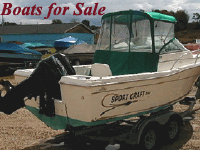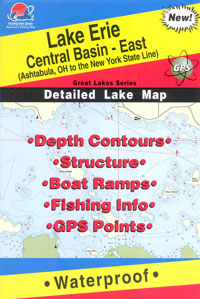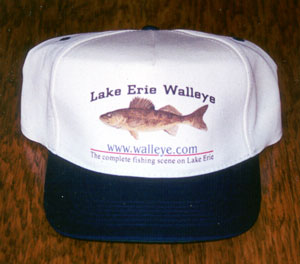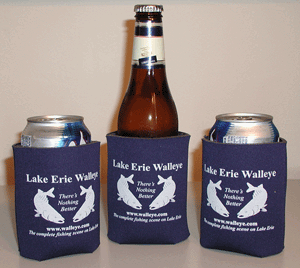It’s all good when it comes to chasing
walleyes in reservoirs late in the fall,
 at
least most of the time.
Big reservoirs can really heat up right before freeze up and
is a time when some hefty catches are made. The last of the last
just before freeze up is what we’re really talking about, and is an
excellent time to be on the water.
at
least most of the time.
Big reservoirs can really heat up right before freeze up and
is a time when some hefty catches are made. The last of the last
just before freeze up is what we’re really talking about, and is an
excellent time to be on the water.
The biggest piece of the late fall
puzzle to place is location, and fortunately it’s not usually all
that tough. Food is
the key and if you know what they’re munchin’ on you can figure it
out fairly quickly.
By taking a look at seasonal movements and what they might be
using as a main food source you will have a better chance for
finding active schools of big fat walleyes.
During much of the summer and into the
fall big reservoir walleyes can be found using deep points, as well
as humps and flats in the main body of the lake. By mid fall
changes occur ( like decreasing water temps and falling water
levels), that signal walleyes
it’s time to make a move and
head for greener pastures.
While walleyes spend a good deal of their time relating to
structure located in the main lake during the summer period, they
are often found miles away by late fall.
One of the reasons for the shift
is the fact that their food source has moved, and walleyes
must find new or follow to survive.
Quite often what they need can be found toward the back of
major feeder creeks and river arms.
Those arms are giant nurseries for perch, white bass, and
baitfish. By late fall schools of baitfish that have been living
and growing in the very back ends of the aforementioned areas leave
the nest and head out into the great unknown.
As baitfish move out hungry ’eyes move in, and cash in on
easy pickings.
By narrowing your search down to major
creek and river arms you can eliminate a lot of water, but maybe not
enough. River arms
can still be enormous and there may not be enough time in a day or
even a week to fish it all.
To refine it even further look as far back in the arm as you
can, where there remains access to deep water. Deep water is
defined by depths in the twenty to thirty foot range and beyond, and
is relative to the body of water you’re on.
By now you have perhaps eliminated over
ninety percent of the available water, which can definitely saveyou
some time. However
you can whittle it down even further by looking for outside bends,
where the main channel pulls tight to the banks.
Outside bends tight to the bank create sheer drop offs.
Walleyes will stack up in these outside bends where they can ambush
schools of bait and pin them against the wall created by a quick
drop.
Now that you’ve narrowed your search
down to a bare minimum, it’s time to get busy and put a few walleyes
in the boat. Simplicity is the name of the late fall game and about
all you usually need is a handful of jigs and a bucket of minnows.
You can also use a live bait rig and is good option if you
can get your hands on suitable bait, like anything in the chub
family. If not you
can still catch your share with a ¼ or 3/8oz jig tipped with a nice
fathead. You can use bigger jigs if you’re fishing deeper water, or
if the wind is howling and you’re not able to feel the bottom. The
idea is to use as small a jig as you can and still retain you’re
feel. Without the all important feel you’re not going to know where
you’re at and won’t catch nearly as many fish as you might have or
should have.
With the right sized jig you can slowly
move along and walk the jig up and down the breaks by lifting and
dropping it back to the bottom. Try to envision exactly what’s
going on down below, and if what you feel doesn’t jive with what you
think should be happening; set the hook.
Quite often fish will pick the bait up on the drop and you
won’t even know they’re there until you make the next lift.
As mentioned before a live bait rig is
a good option and requires a big enough bouncer to stay with the
bottom. Try to work
the bouncer just about straight up and down and use more weight if
you’re having trouble.
A bouncer and a plain hook on a six foot or so leader is
about all you need as long as you’ve got good minnows.
To get more action out of your bait try tail hooking your
minnow. A tail hooked minnow will fight and thrash and create
plenty of fish attracting action.
Even if you know where they are and
what to use there are times when you might find yourself
up against the wall.
The fact is lakes can cycle and if you run into an
overabundance of bait the going could be a little tough, to say the
least. Lake Oahe here in South Dakota is a good example, and has a
ton of shad in it right now that are everywhere, which has spread
the fish out and made feeding for a walleye as easy as opening his
mouth. Besides all
of the shad they usually have a big die-off late in the fall which
makes a tough situation even
worse. The
only answer might be using your trailer and making a move to another
body of water.
Although reservoir walleyes can be
caught all day, peak activity can still be expected early and late
in the day. If
you’ve been working a good looking spot without success you may have
to stick it out until the day is just about gone to know if fish are
using the area. The key is not giving up and realizing the fact
that you can quickly put a bunch of fish in the boat when you do get
them going.






 at
least most of the time.
at
least most of the time.